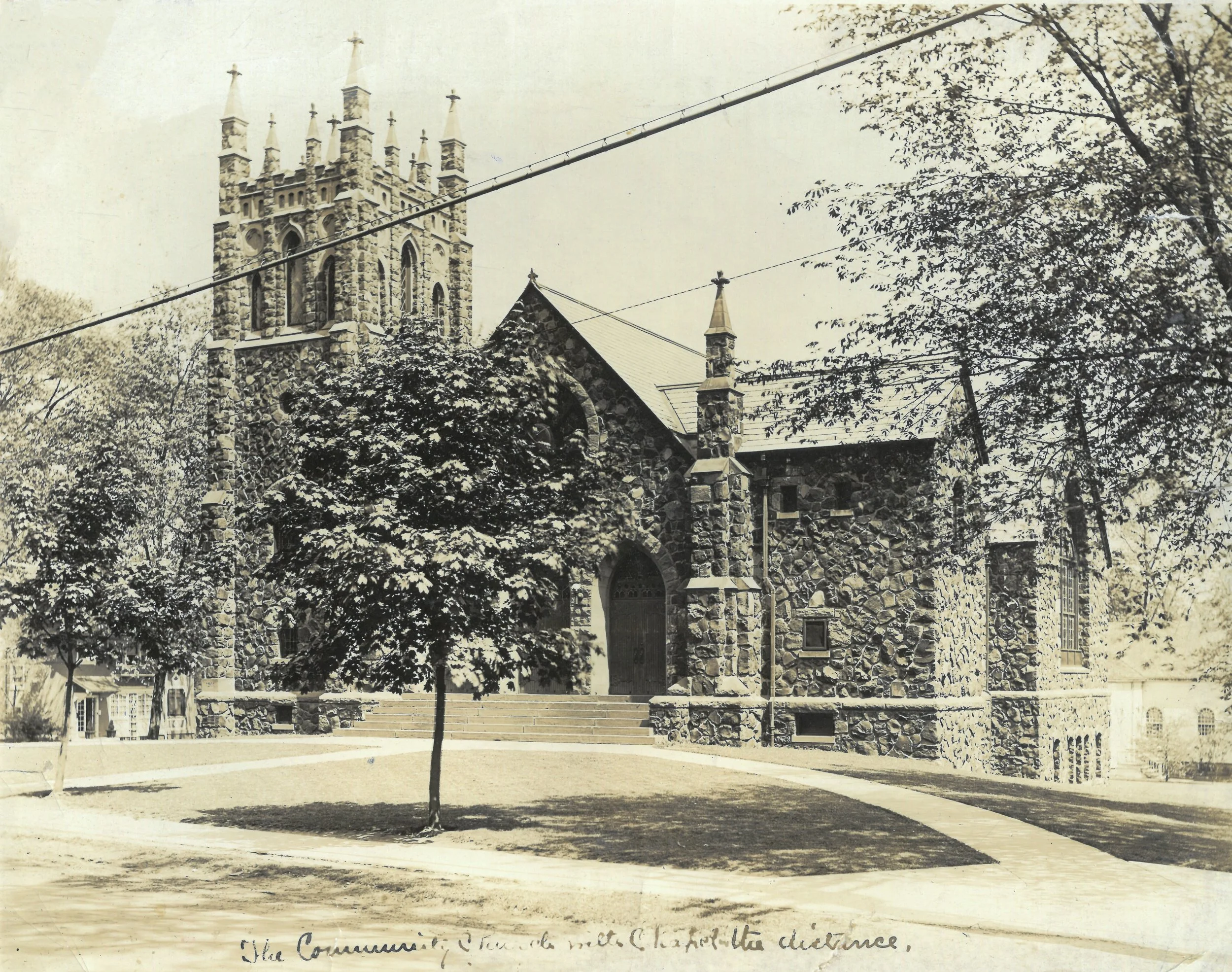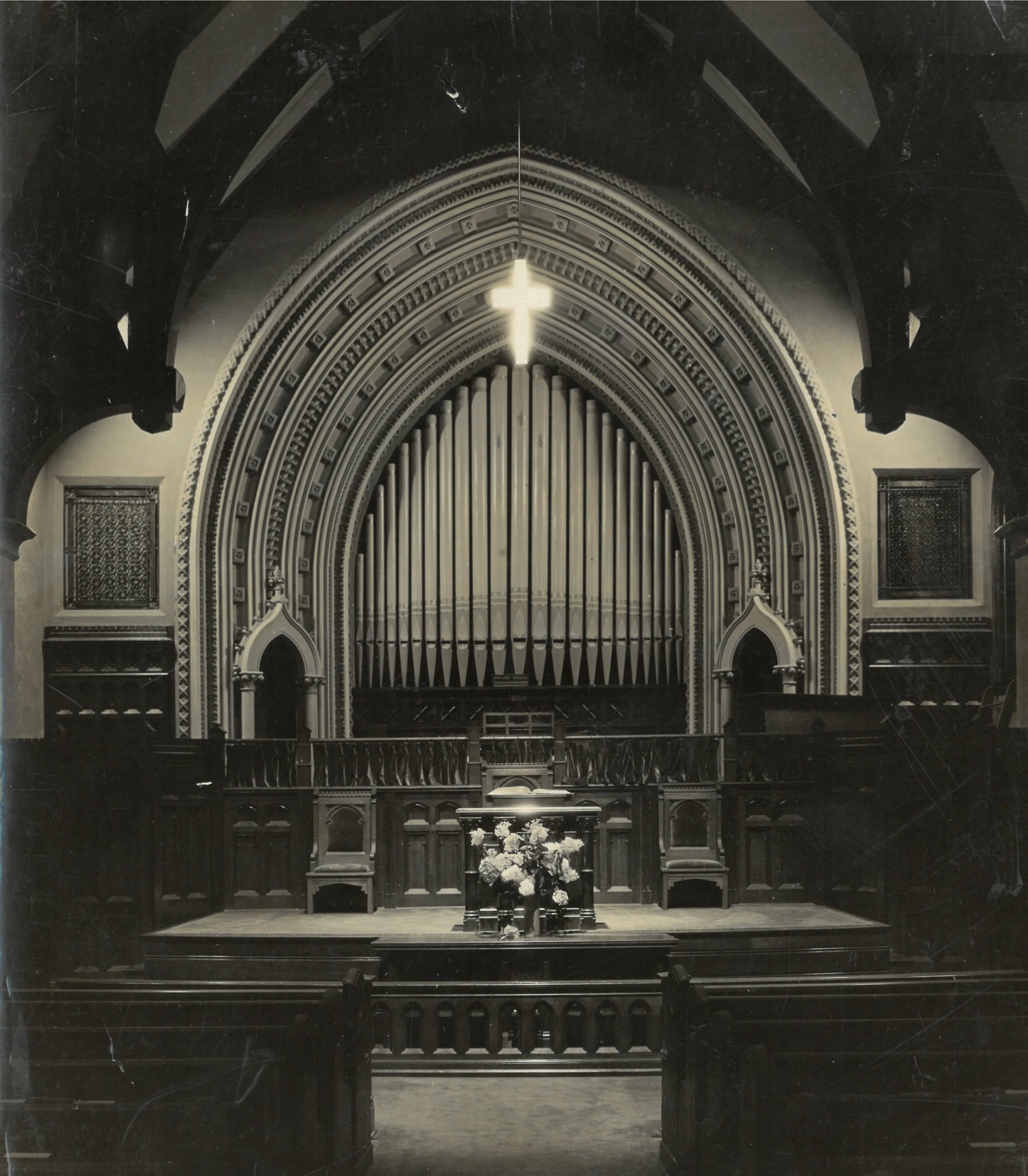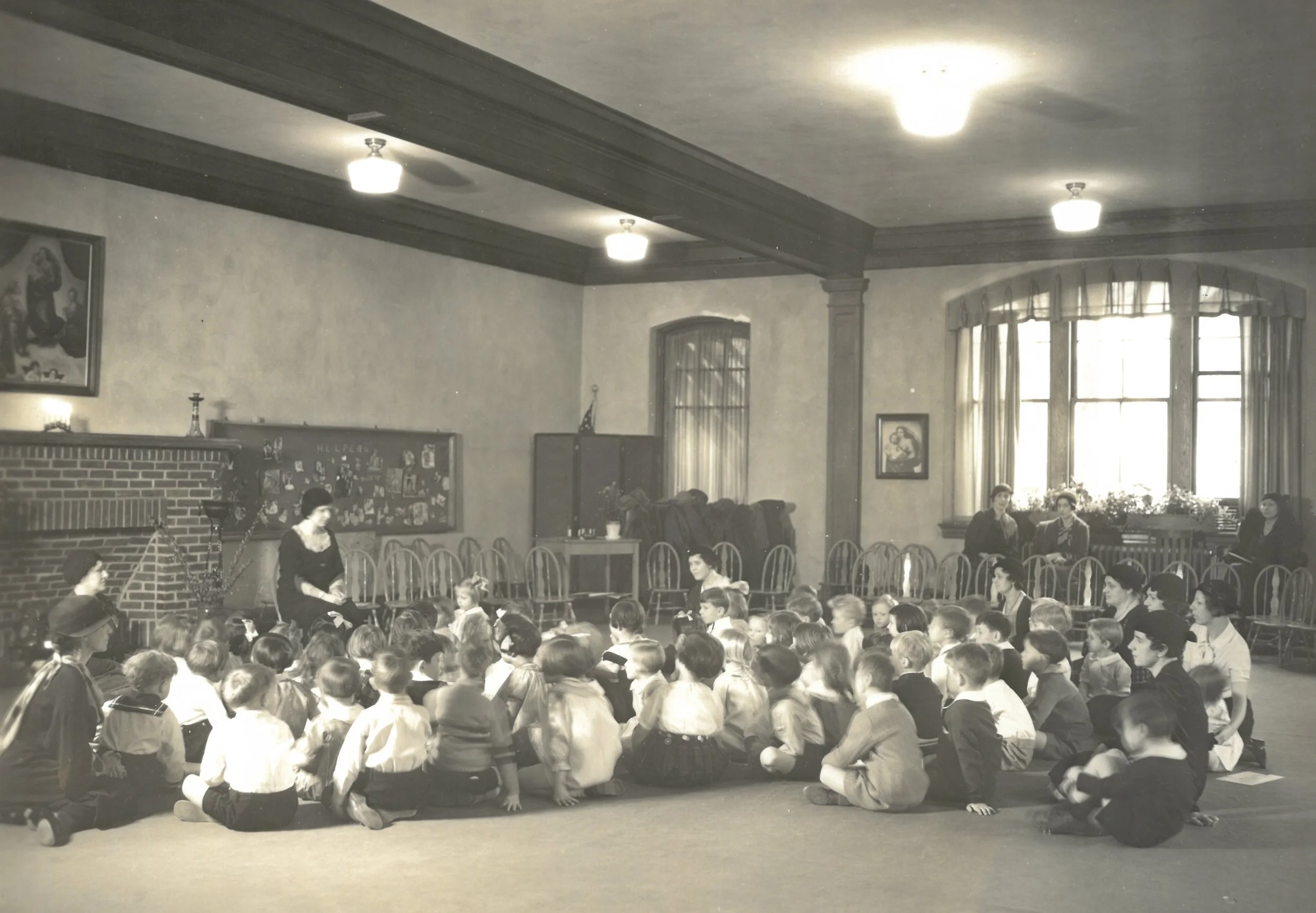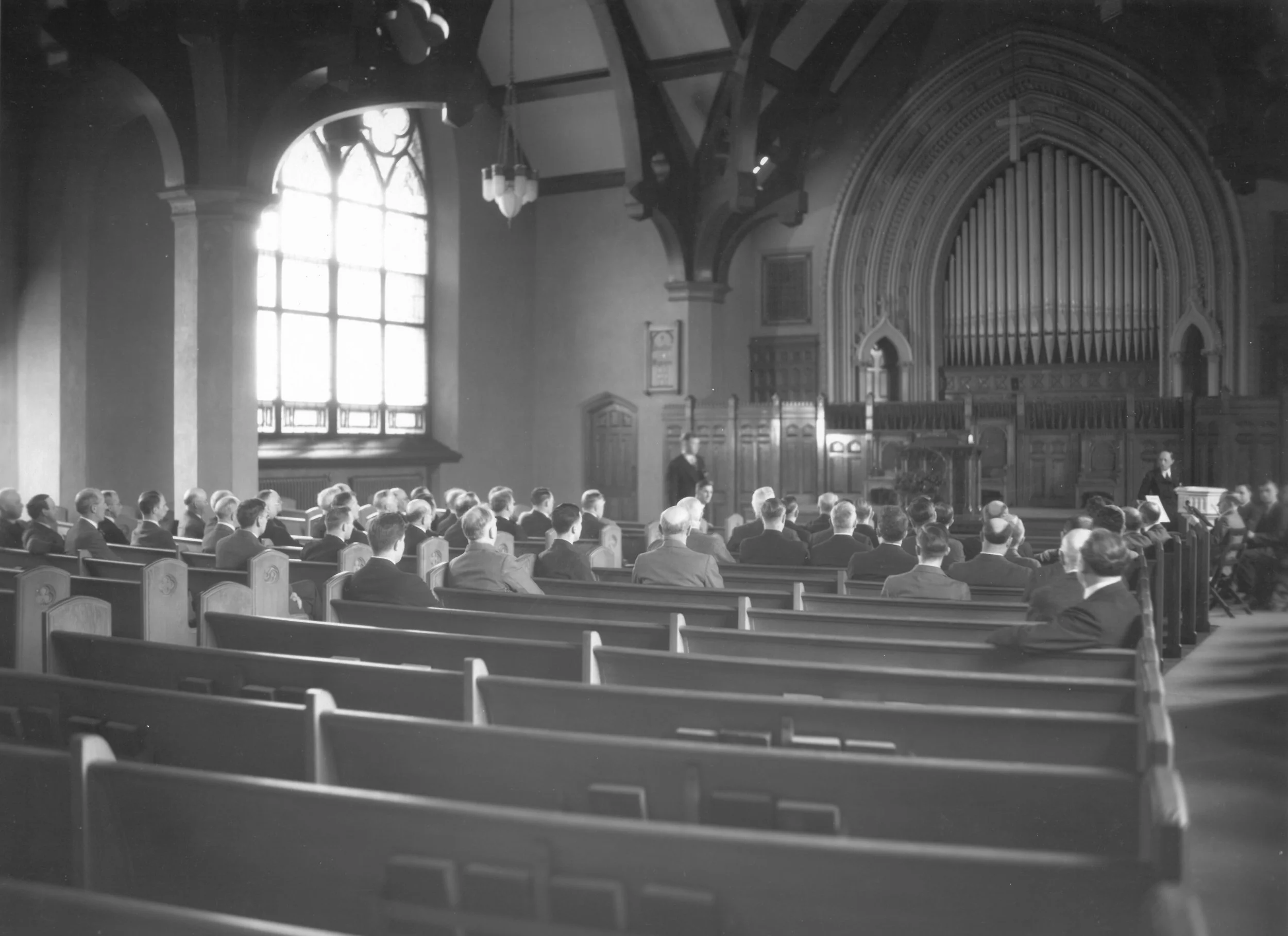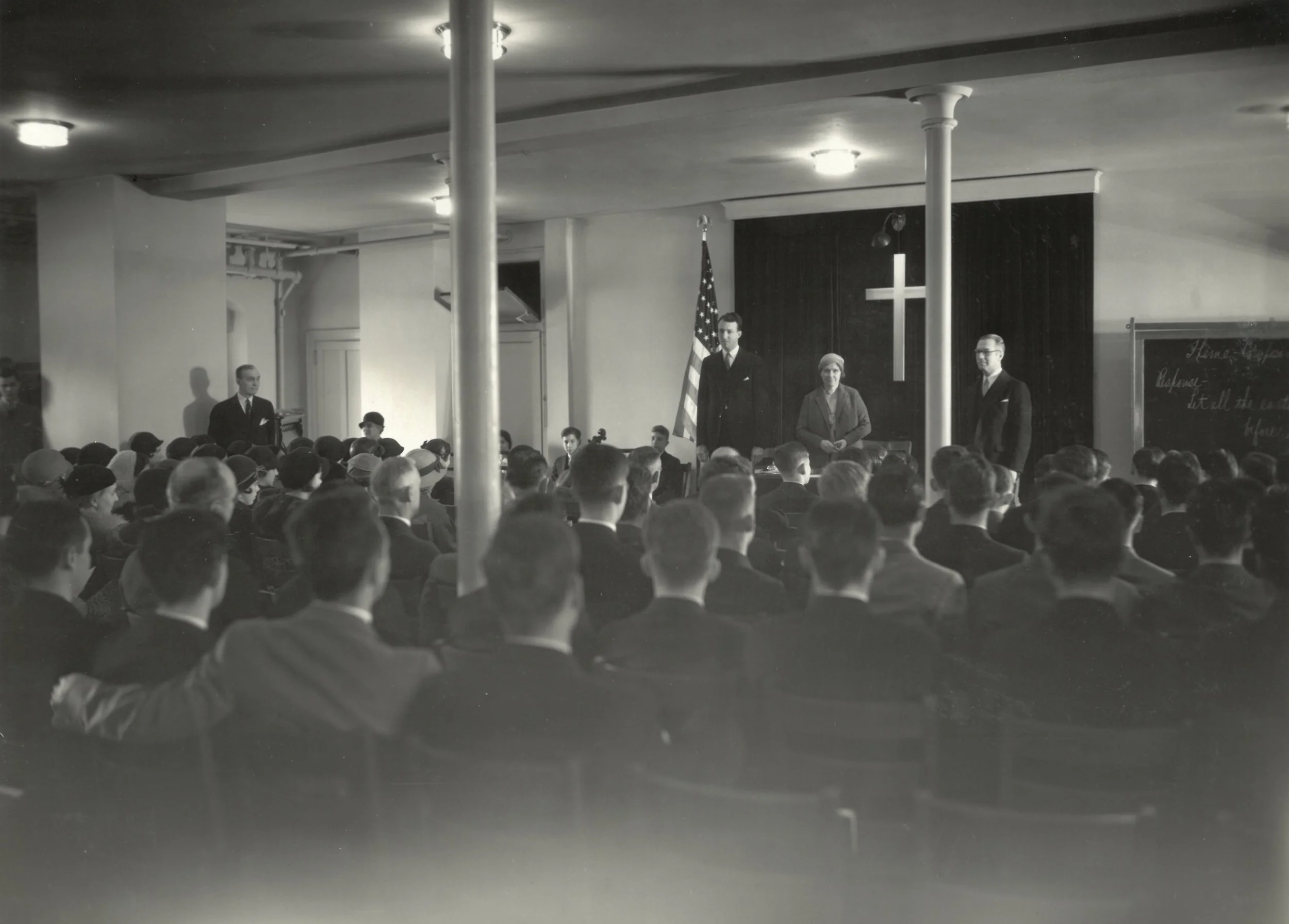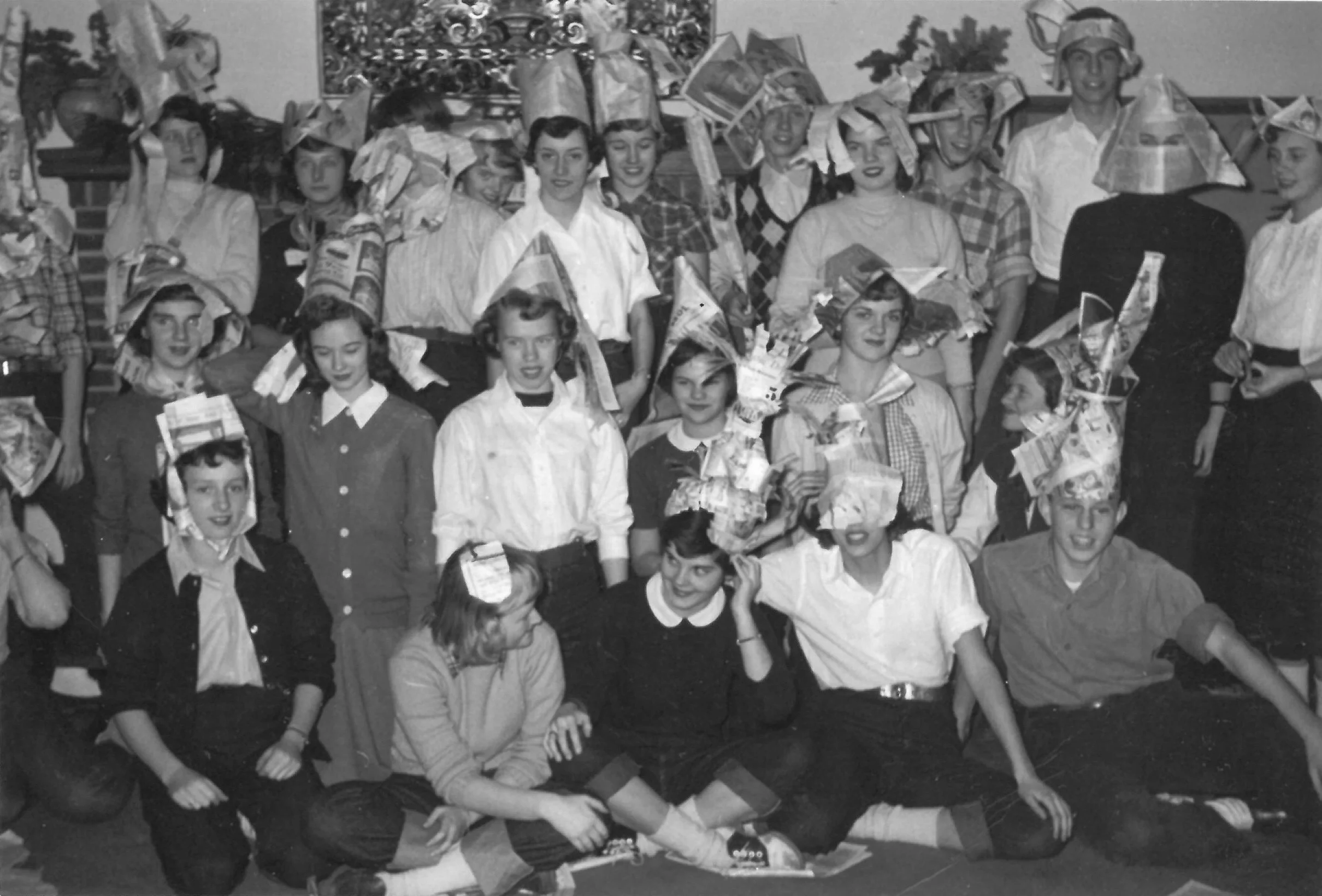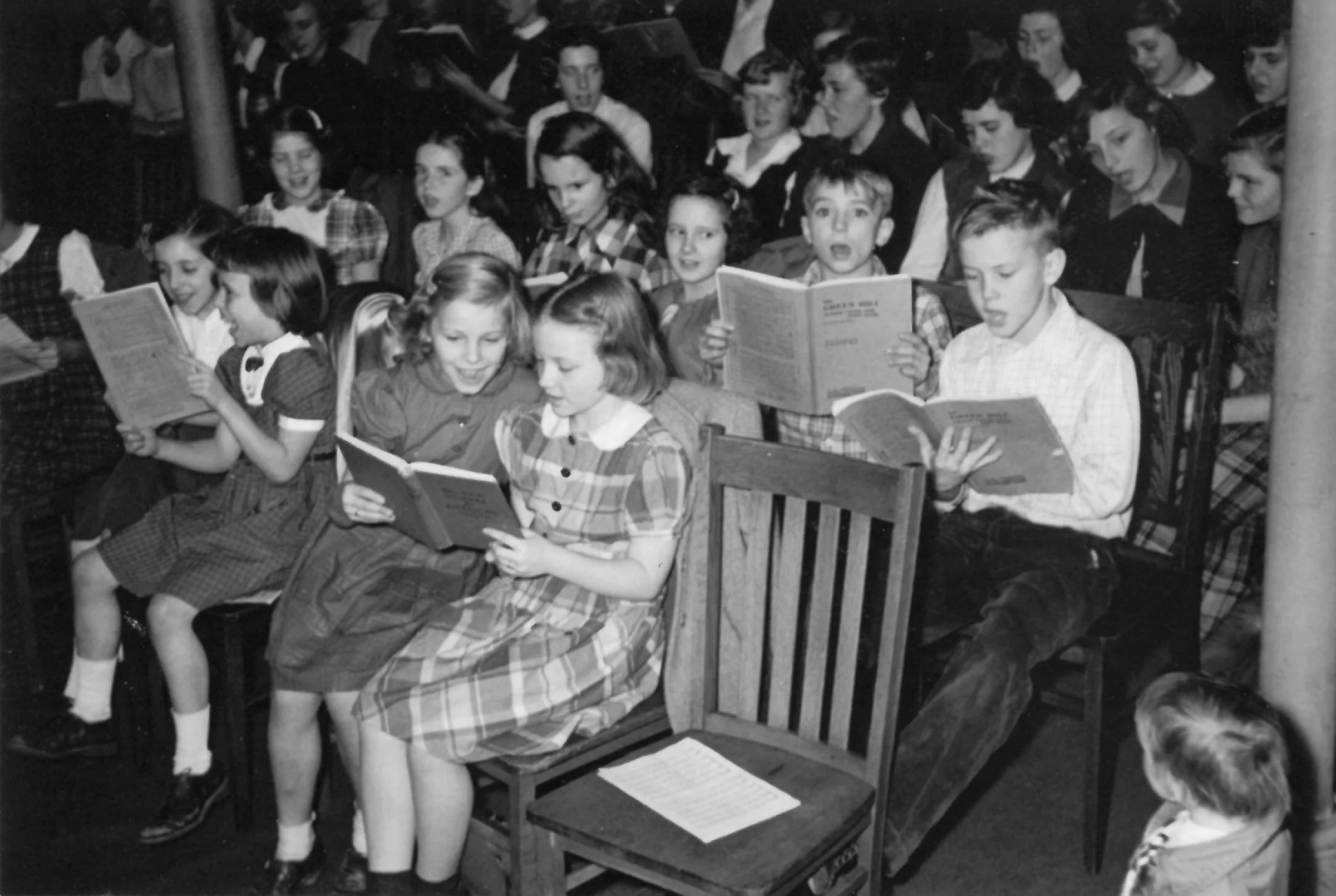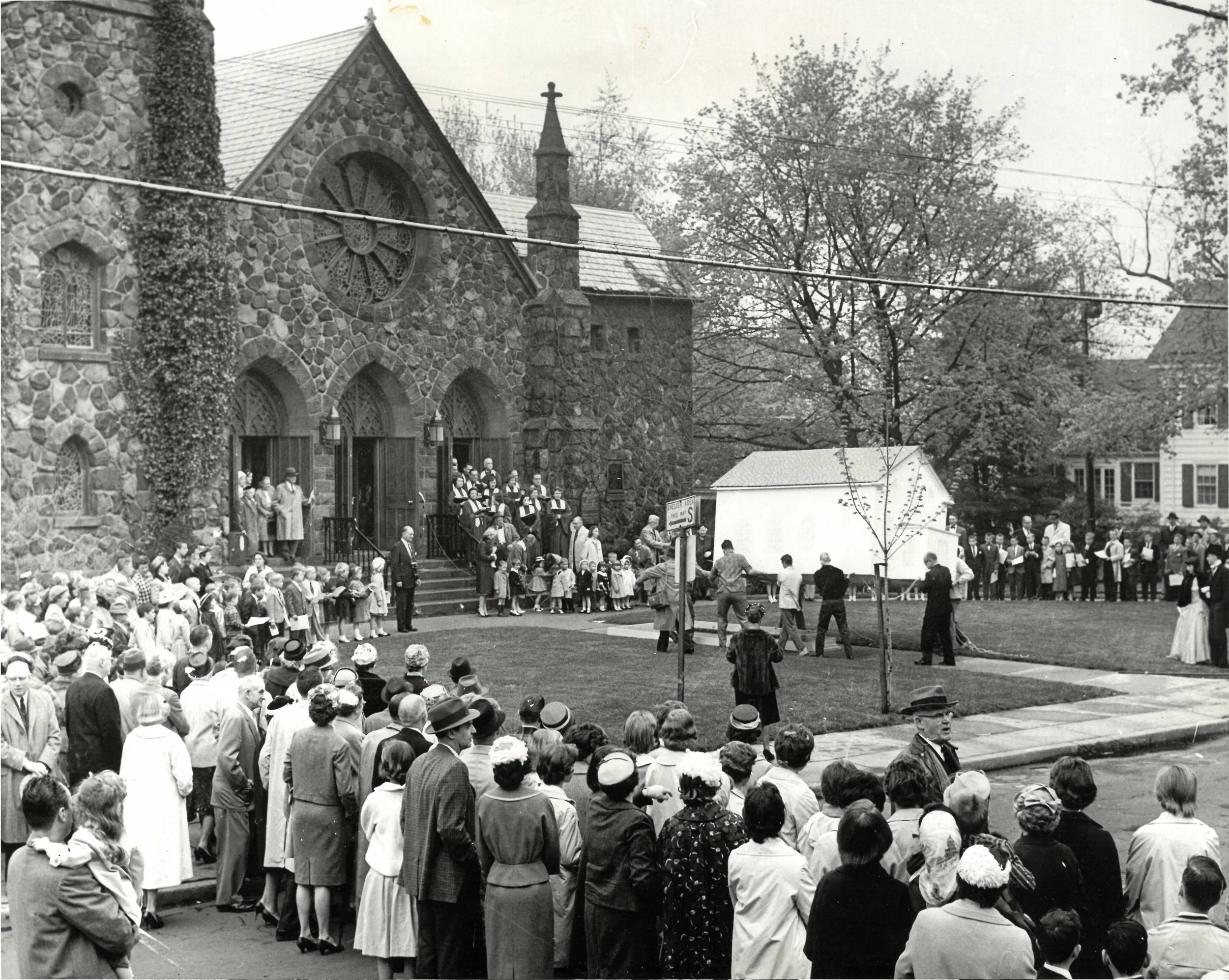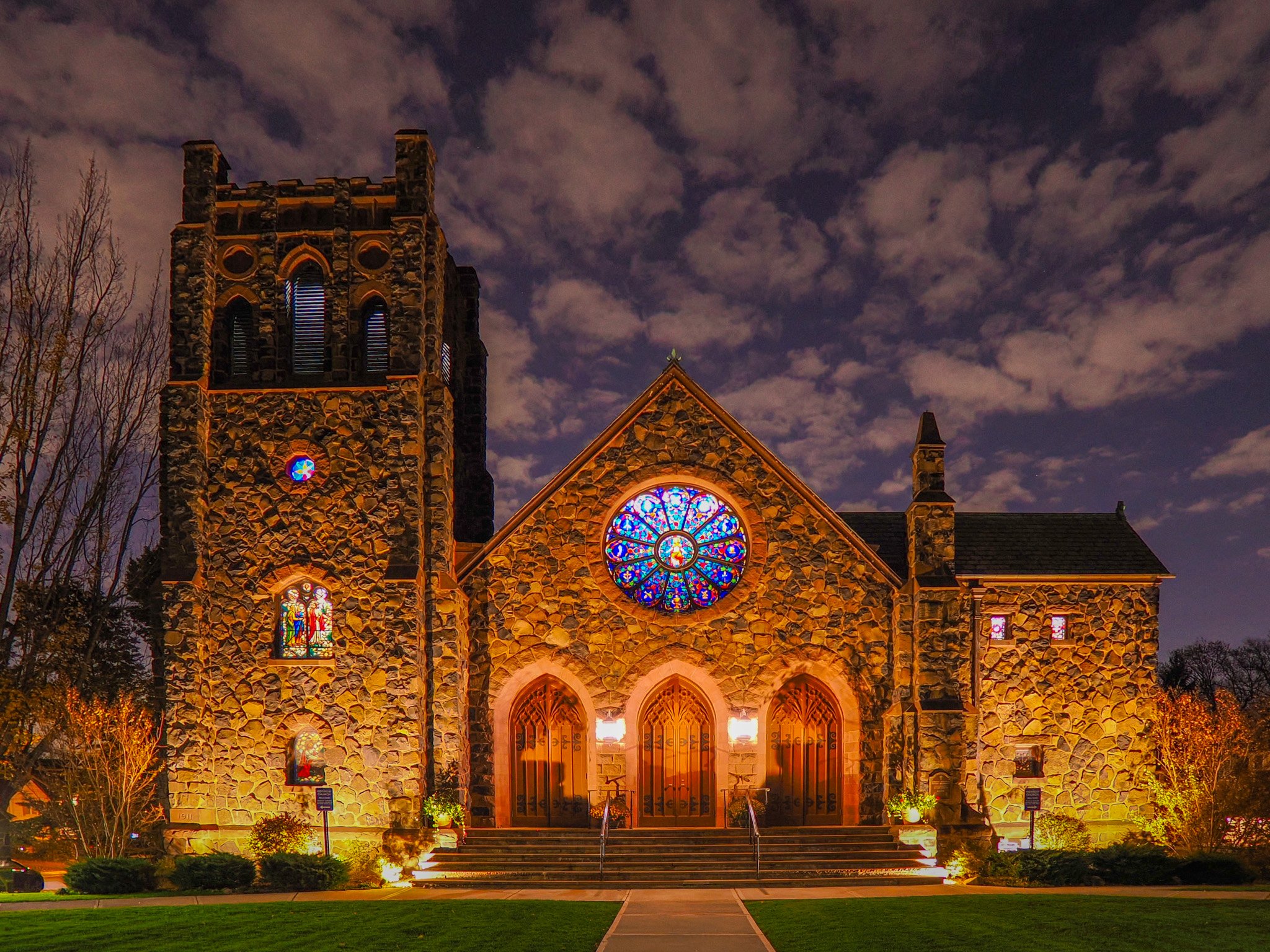Our History
For more than two centuries, Morrow Church has stood at the heart of Maplewood—anchoring the town in faith, service, and community. From its beginnings as a small gathering of neighbors to its role today as a vibrant and inclusive congregation, Morrow’s story mirrors the growth of Maplewood itself and the enduring spirit of its people. What follows is the story of how this church came to be—and how, through every generation, it has both shaped and been shaped by the community around it.
Old Baptist Chapel (1811)
The Old Meetinghouse
1805 - 1848
In the early 1800s, the settlers of Jefferson Village—now Maplewood—had no local church of their own. They walked miles to worship in neighboring towns like Northfield (Livingston), Lyon’s Farms (Hillside), Orange, and Springfield. Around 1805, sixteen Baptists began gathering in the home of Elder Gildersleeve at 57 Jefferson Avenue, a house that still stands today. By 1811, they had formally organized as the Jefferson Village Baptist Society and built a modest, one-room meetinghouse at the corner of Ridgewood Road and Bear Lane (now Claremont Avenue) on land donated by Caleb Durand.
Known locally as Babel Chapel, the simple, wood-clad structure sat behind a fence with a small graveyard at its rear. The congregation never grew beyond twenty-five members, and when Elder Gildersleeve died in 1846, the society gradually dissolved. Universalist meetings began drawing away the remaining members, and by 1848, the Baptist Society disbanded entirely. The meetinghouse was left to decay—its roof caved in by a fallen tree, its pews overtaken by animals, its spirit lingering only in memory.
Jefferson Ave & Crooked Brook, Methodist Meeting Area (1850s)
The Early Methodist Movement
1850s
By the early 1850s, Methodists began organizing meetings in the area, forming what were known as praying bands—small groups who worshiped together, studied scripture, and held one another accountable. John Wesley, the founder of Methodism, believed spiritual growth could only flourish in community, and early Methodists embraced that conviction wholeheartedly.
Many of these groups grew out of large outdoor revival meetings, such as those held in Irvington and Ocean Grove. These weeklong gatherings combined spirited preaching, communal meals, and music that stirred both faith and fellowship. Entire families traveled miles to attend, pitching tents and forming lasting spiritual bonds. People were encouraged to come, be moved, and leave transformed.
Maplewood’s own praying band emerged from the South Orange Methodist Society, meeting weekly along the Crooked Brook (the Rahway River where it meets Jefferson Avenue). As the group expanded, so did the need for a permanent home—and the long-abandoned Baptist meetinghouse on Claremont Avenue soon became their answer.
Old Chapel on Claremont Ave. before being moved (1880s)
The Methodist Meetinghouse
1854 – 1890
In 1854, the remaining Baptists leased their small meetinghouse and graveyard to the Methodists for four years, agreeing that the Methodists would maintain the property and make it available for any Baptist services or burials. When the lease expired in 1858, the Baptists—by then few in number—graciously turned the building over to the growing Methodist congregation, which was then served by a traveling preacher shared with the South Orange Methodist Society (now South Orange Vailsburg United Methodist Church).
By 1867, the Maplewood congregation had become a separate entity with its own appointed pastor, who typically served one-year terms before rotating out. That same year, the church officially took the name The Methodist Episcopal Church of Maplewood. Through the late 1800s, the town was still largely farmland, and the church maintained a modest but faithful membership of about fifty.
As the 1880s brought rapid development around the Maplewood train station, church leaders recognized that their chapel on Claremont Avenue was too remote to serve the growing village. The congregation voted to relocate closer to the center of town.
In 1889, Rev. John Morrow was appointed pastor. Though some questioned his effectiveness at age sixty-six, his warmth and conviction quickly silenced doubts. At his very first Trustees meeting, Morrow urged the church to act boldly on its plan to move. Fundraising began, and several parcels of land were soon purchased between Lenox Place and Baker Street. Though only half the needed funds had been raised, Morrow pressed ahead with faith that the rest would follow—and he was right.
Old Chapel Interior on Children's Day (1880s)
Old White Chapel (1890)
The Little White Chapel at Lenox Place
1890-1911
In 1890, the meetinghouse was lifted onto greased logs and pulled slowly down Ridgewood Road by a team of horses—a weeklong journey that ended at a new foundation on Lenox Place, where the church playground now stands. Once settled, the modest structure underwent a full renovation. A vestibule and bell tower were added, along with decorative woodwork and ornate interior detailing. The original wooden pews were replaced with handcrafted bench chairs that made the space both elegant and adaptable.
Thanks to his steady leadership through this transition, Rev. John Morrow became the first pastor to serve multiple years. After three years, he retired in 1892, but his impact endured. The church’s bell—still in use today—was installed in 1893, and the chapel door remained unlocked so the bell could be rung to warn of fires. The following year, land east of the chapel was purchased for a new parsonage at 17 Lenox Place. Built in the American Foursquare style, it was considered one of the finest homes in the conference. Membership continued to climb, and locals affectionately called the church “The Little White Chapel.”
When Rev. Morrow passed away in 1897, the congregation honored him by renaming the church The Morrow Memorial Methodist Episcopal Church of Maplewood.
Growth continued into the new century. In 1899, the Pierson family—of Pierson Mill—donated three Tiffany windows. A 1904 addition expanded the chapel for Sunday School and overflow services, with large folding doors connecting the rooms. Two years later, a new organ was installed, half funded by Andrew Carnegie, who helped finance thousands of church organs nationwide. As membership and activity swelled, the congregation looked ahead to an even larger home and purchased the remaining land between the chapel and Ridgewood Road for a new stone church.
Church Leaders on Chapel Lawn (1909)
Sunday School at the Chapel (1895)
Chapel Interior on Easter (1905)
Chapel With New Addition (1908)
Sunday Schoool on Chapel Lawn (1909)
New Stone Church Construction (1911)
The New Stone Church
1911 – 1926
The congregation’s vision for a grand, Gothic Revival cathedral was eventually tempered by practicality, resulting in a more modest yet elegant stone church. Designed by D’Oench & Yost Architects of New York, the new building on Ridgewood Road was completed in August 1911 in a Gothic-inspired Auditorium style.
Auditorium-style churches, like Morrow’s, featured curved pews and a gently sloped floor—all oriented toward a central pulpit, stage, and organ. This design placed the preacher at eye level with the congregation, fostering connection rather than hierarchy. The layout reflected a growing Methodist emphasis on shared experience, community, and the power of the spoken word.
The new building boasted modern conveniences—steam heat, indoor plumbing, electric lighting—and included a balcony, tower, and multipurpose hall (now Ivy Chapel). It was a striking evolution from the humble Little White Chapel, which still stood behind the new church and was used for Sunday School.
In the years that followed, Morrow Church expanded its reach through missionary work both locally and abroad, deepening its role as Maplewood’s community church. Though Methodist in denomination, Morrow’s spirit of welcome drew worshipers from many Christian traditions who found a home within its stone walls.
New Stone Church on First Christmas (1911)
New Stone Church (1915)
Groundbreaking for Educational Wing (1924)
Grand Expansions
1926-1954
As Maplewood flourished in the 1920s, so did Morrow Church. By mid-decade, Sunday services were overflowing, and plans were set in motion to expand. In 1924, architect Floyd Parsons was commissioned to extend the Sanctuary and increase capacity to more than 400. The addition included new Sunday School rooms, offices, restrooms, a kitchen, and a large multipurpose hall with a movie projection booth and Akron-style classrooms (now the Music Room and adjoining spaces). Even today, the Sanctuary remains much as it appeared when completed in 1926—complete with innovative lighting that could brighten or dim at the pastor’s cue. General Electric even spotlighted Morrow Church in a 1927 newsletter for its cutting-edge technology.
To make room for the expansion, The Little White Chapel was taken down. Its bell was moved to the stone tower, and its Tiffany windows were installed along the south aisle of the Sanctuary, where they still shine today. Portions of the original chapel’s stone foundation remain hidden beneath the church.
Over the next two decades, membership climbed to more than 2,000. Two Sunday services were held weekly, and programs for children, youth, and adults thrived. The beloved Turnover Sale began in the 1930s—a town tradition that continues to this day, born of the dedication of Morrow’s hardworking women (and men) raising funds for church and community.
During World War II, the congregation mourned eleven young members who lost their lives in service. Known as “The Eleven,” they are memorialized through furnishings, plaques, and windows throughout the church. In the years that followed, as postwar America renewed its faith in local institutions, Morrow underwent a beautification effort—adding ornate woodwork, decorative painting, and new stained glass. In 1948, funding began to replace the Sanctuary’s plain glass with vibrant new windows designed by Payne & Spiers Studios. Over the next fifteen years, gifts from members and families completed the series we see today.
Sanctuary After Addition (1926)
Sunday School (1920s)
Sunday School Science Experiment (1920s)
Men’s Meeting in the Sanctuary (1930s)
Sunday School in the Assembly Hall (1920s)
Sunday School Piano Songs (1920s)
Chapel Service (1930s)
First Banquet in the Fellowship Hall (1954)
Mid-Century Morrow & Beyond
1954 – 1990’s
By the 1950s, Morrow Church had become a true community hub. As activity grew, so did the need for modern, flexible space. A new brick addition at the rear of the church introduced Fellowship Hall with a stage, the smaller MacDonald Hall, a commercial-grade kitchen, new restrooms, and additional classrooms. At the same time, larger rooms in the stone building were subdivided into smaller classrooms and offices to accommodate the expanding ministries.
Beginning in the 1950s, multiple pastors typically served the congregation to meet its size and scope. In 1959, the Dutch Colonial house at 12 Roosevelt Road was gifted to the church as a second parsonage. Eight years later, the property at 15 Lenox Place was purchased and demolished to create the current parking lot. Following the 1968 denominational merger, the church formally became Morrow Memorial United Methodist Church. A year later, Morrow Preschool opened its doors within the church, and in 1974 the Chapel Garden was established as a peaceful memorial space still used today. A major building-wide renovation in 1992 refreshed the entire facility.
Through these decades, Morrow remained a steady presence in Maplewood—hosting civic meetings, community events, and celebrations; sponsoring Scout troops; and sharing combined summer services with neighboring Presbyterian, Methodist, and Episcopal churches. It was not uncommon for multiple weddings to fill the sanctuary on a single day—a testament to the church’s vital role in the life of the town.
Singing in the Fellowship Hall (1954)
Youth Party (1950s)
Easter Sunday (1957)
Youth Singing (1950s)
Moving the Chapel at the 150th Anniversary Service (1957)
Morrow Church Today
Today, Morrow Church remains a cornerstone of faith and community life in Maplewood. The building hums with activity throughout the week, serving both church ministries and local groups. Many still remember how, during Superstorm Sandy, Morrow became an emergency gathering place—one of the few buildings in town with electricity and heat. More than 500 neighbors a day came through its doors to rest, recharge, cook meals, and organize aid for those in need.
In the years since, Morrow has continued to grow as a progressive, mission-driven church that truly welcomes all people. The congregation has sponsored and supported immigrant and refugee families, assisted unhoused neighbors, hosted twelve-step and family programs, and raised funds to build a primary school in Sierra Leone. Morrow’s youth regularly lend their hands to home-repair projects for those in need. The church was among the first Reconciling United Methodist Churches in New Jersey—openly welcoming and affirming LGBTQ+ persons—and the first in the state to publicly host a same-gender wedding.
Though the role of the church in society has evolved, Morrow remains a place of love, belonging, and worship for Maplewood and beyond. Whether you’ve visited once or have been part of this family for generations, you are part of Morrow’s living story. May you always find home here.













